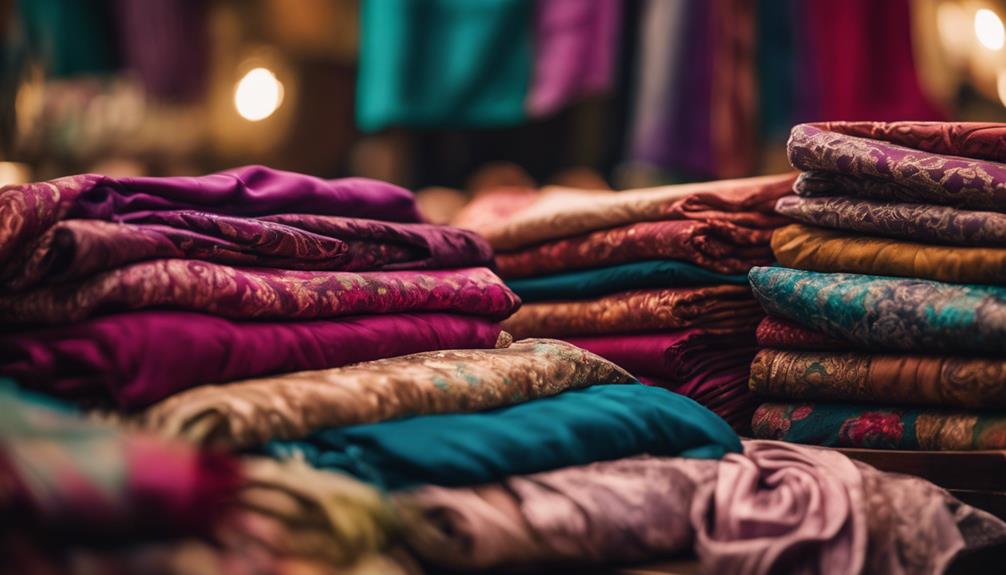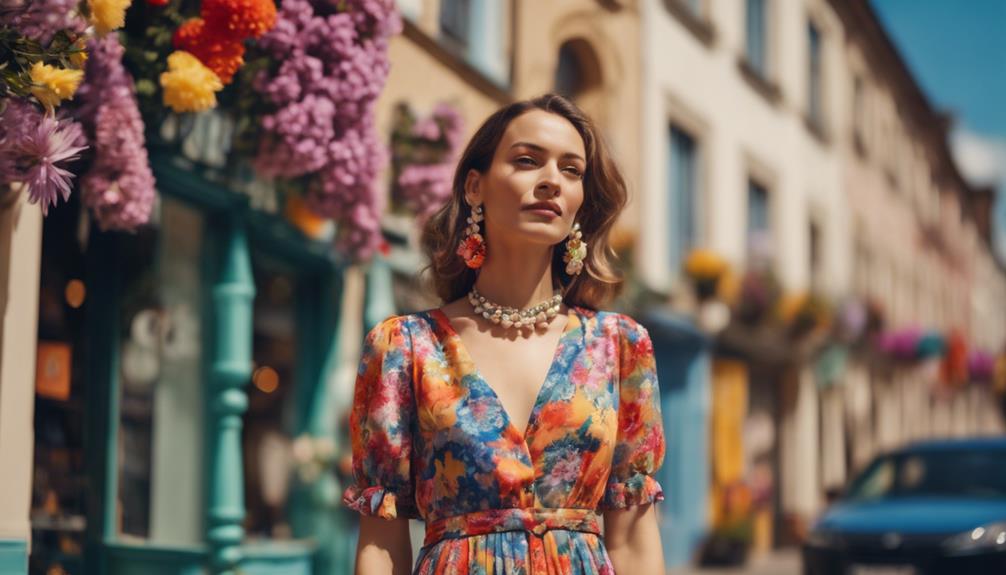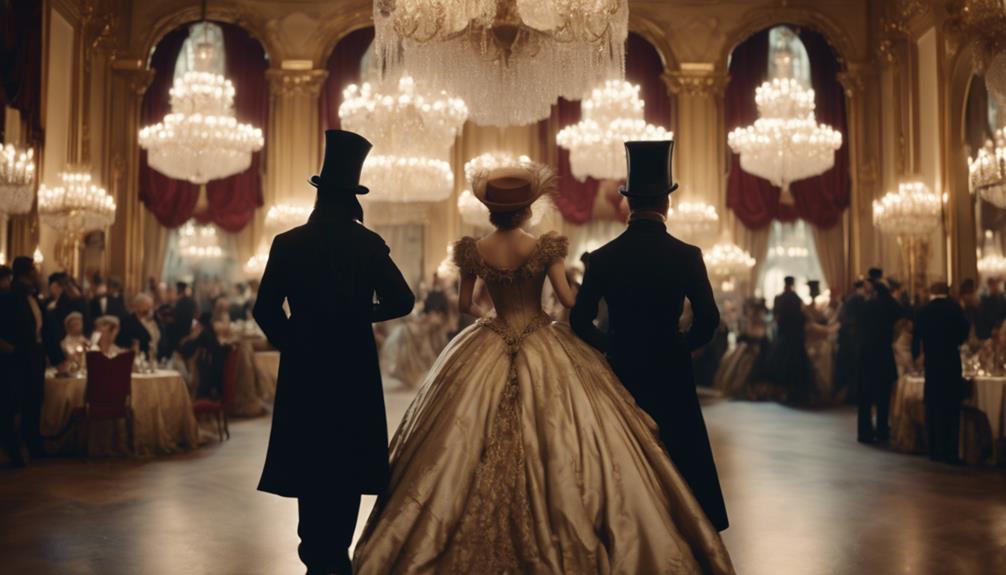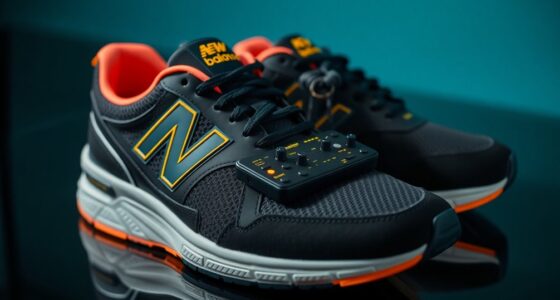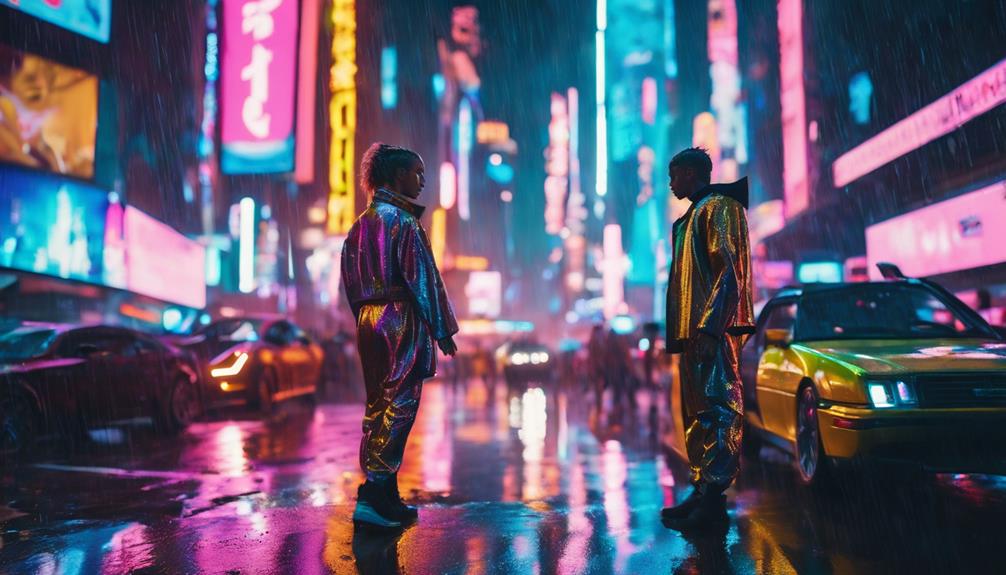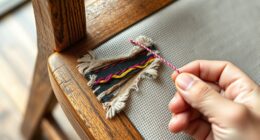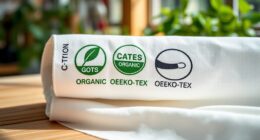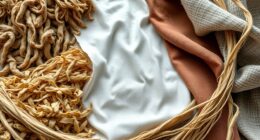When you design your fashion collections, the choice of materials plays a crucial role. Consider using versatile fabrics like organic cotton and recycled polyester for sustainable options, or opt for luxurious materials like rich silk. Adding textures such as stretch silk jersey knit can enhance the overall look of your pieces. Neutrals and jewel tones provide a chic color palette to experiment with. By mixing and matching these fabrics, you not only showcase your individual style but also encourage eco-friendly practices in the fashion industry. There is a wealth of information to uncover about materials that can revolutionize your designs!
Key Takeaways
- Explore a variety of natural and synthetic fabrics, including organic cotton, silk, and recycled polyester, for versatile and sustainable design options.
- Incorporate diverse textures, such as Stretch Silk Jersey Knit and Quilting Cotton, to enhance the visual appeal of your garments.
- Utilize rich jewel tones and soft neutrals in fabric choices to create timeless and sophisticated wardrobe staples.
- Embrace sustainable practices by choosing eco-friendly materials and transparent supply chains that prioritize ethical production.
Origin and historical background of the fashion trend/style
When you look at the evolution of fashion, you'll see how historical fabric innovations shaped styles over the centuries.
Iconic designers have played a vital role in this journey, using their creativity to redefine trends.
Understanding these influences can give you a deeper appreciation for the materials you choose in your own fashion designs.
Historical Fabric Innovations
The journey of fabric innovations spans thousands of years, beginning with ancient civilizations that harnessed natural fibers like linen, cotton, and silk to create clothing imbued with cultural significance. Each fiber offered unique qualities; for example, silk was prized for its luster and softness, while cotton became a staple for its comfort and breathability.
During the Middle Ages, advancements in weaving techniques led to luxurious fabrics like brocade and damask, often associated with nobility and wealth. Fast forward to the Industrial Revolution in the 18th and 19th centuries, when the invention of the power loom transformed fabric production, making textiles more accessible than ever and laying the groundwork for modern fashion.
The early 20th century brought synthetic fibers like nylon and polyester, revolutionizing the textile industry with their durability and versatility. These materials influenced fashion trends considerably, offering new possibilities in design.
In recent decades, there's been a notable shift towards sustainable fabrics, with innovations such as organic cotton and recycled polyester addressing environmental concerns and shaping contemporary fashion practices. Understanding this historical context enriches your appreciation for the materials you choose in your designs.
Fashion Icons and Designers
Fashion icons and designers have consistently shaped styles through their innovative visions and cultural influences, making significant impacts on the evolution of modern trends.
Designers like Coco Chanel and Christian Dior set the stage for what we recognize today. Chanel introduced casual elegance, while Dior's 'New Look' in the 1940s transformed women's silhouettes. As fashion progressed, Yves Saint Laurent democratized clothing in the 1960s, bringing ready-to-wear into mainstream culture.
In the 1970s, the punk movement, led by figures like Vivienne Westwood, challenged conventions and inspired a DIY aesthetic, paving the way for streetwear. Fast forward to the 1980s, and power dressing emerged, with Giorgio Armani emphasizing tailored suits and bold colors, reflecting women's growing corporate presence.
Today, contemporary designers like Alexander McQueen and Stella McCartney prioritize sustainability and innovation. You'll find exquisite materials like Floral Printed Silk, Baroque Pattern Printed Stretch, and striking designs featuring Animal and Floral Print or Abstract Chain Floral Print.
These influences not only pay homage to the past but also shape the future of fashion, blending tradition with modern needs and aesthetics.
Key Characteristics
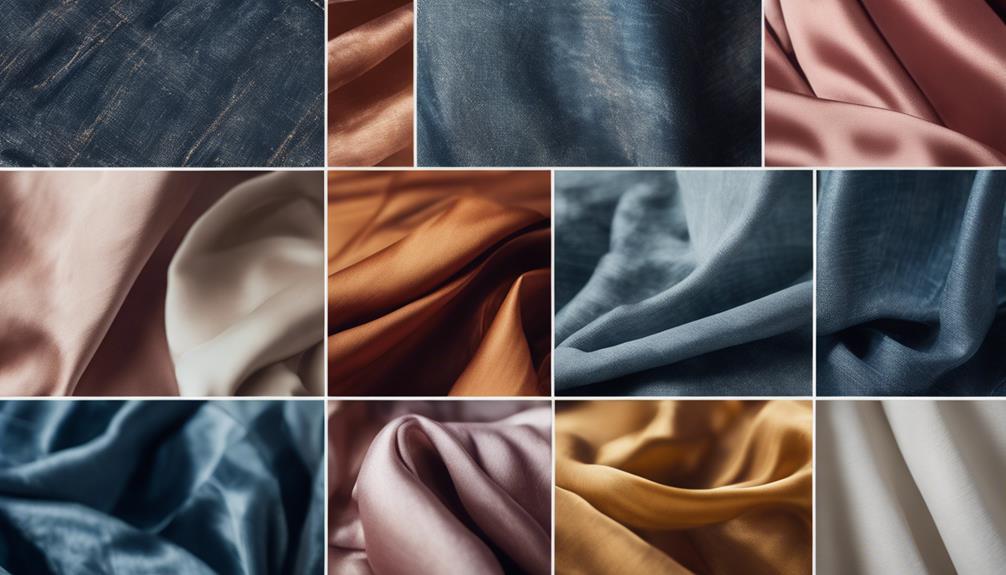
When you're choosing materials for your fashion designs, it's essential to take into account their key characteristics.
You'll find that textural variety and versatility can elevate your creations, while rich jewel tones and neutrals add depth to your palette.
Plus, timeless wardrobe staples guarantee your designs remain relevant season after season.
Textural Variety and Versatility
Exploring a range of textures can elevate your fashion designs, allowing you to create garments that stand out with both depth and versatility. With options like Stretch Silk Jersey Knit and Quilting Cotton, you can easily incorporate different tactile experiences into your work.
The smooth, luxurious feel of Stretch Silk Jersey Knit not only drapes beautifully but also adds an elegant touch to any design. On the other hand, Quilting Cotton offers a sturdier, more structured option, perfect for casual or playful pieces.
Don't forget to utilize the vibrant designs available, such as the Pattern Printed Stretch Silk and Floral Print Silk Jersey. These fabrics can inject life into your creations, letting you play with color and pattern while maintaining a cohesive aesthetic.
The ability to mix and match these varied textures encourages creativity, allowing you to craft unique looks that resonate with your personal style. By harnessing these diverse materials, you can guarantee your garments aren't only visually appealing but also comfortable and functional, making them perfect for any occasion.
Rich Jewel Tones and Neutrals
Incorporating rich jewel tones and soft neutrals into your designs can elevate your creations, offering a sophisticated palette that complements a variety of textures and styles.
Rich jewel tones like deep navy, emerald green, and ruby red are often found in luxurious fabrics such as silk and ponte de Roma. These colors not only enhance the vibrancy of your garments but also add a premium feel to your designs.
On the other hand, neutrals like beige, off-white, and gray provide versatility, making them ideal for layering and coordination. Available in specialty fabrics like twill knits and chiffon, neutrals can seamlessly blend with jewel tones, creating elegant contrasts.
When you use rich jewel tones in printed fabrics like paisley or abstract designs, your garments can truly stand out. These color combinations are suitable for both summer and winter collections, ensuring year-round wearability.
Whether you're designing dresses or blouses made from lightweight fabrics like chiffon or rayon blends, the combination of jewel tones and neutrals allows for sophisticated and eye-catching pieces that will resonate with fashion-conscious audiences.
Timeless Wardrobe Staples
Timeless wardrobe staples are defined by their versatility and quality, featuring fabrics like cotton, rayon blends, and silk that effortlessly blend comfort with elegance. When you choose these materials, you can create pieces that shift seamlessly from casual to formal settings.
Fabrics like black nylon spandex stretch scuba knit and off-white cotton-modal stretch jersey knit offer just the right amount of stretch, guaranteeing a flattering fit.
Incorporating prints into your staples can elevate your style. For example, a Print Silk Jersey featuring a vibrant floral design can add a touch of femininity while maintaining a classic appeal. Specialty fabrics like double brushed knits and wool are perfect for layering, providing warmth and style during colder seasons.
Investing in quality fabrics, such as silk charmeuse and rayon, guarantees durability and timelessness in your wardrobe. These choices not only enhance your designs but also make them worthy investments.
Modern Interpretation
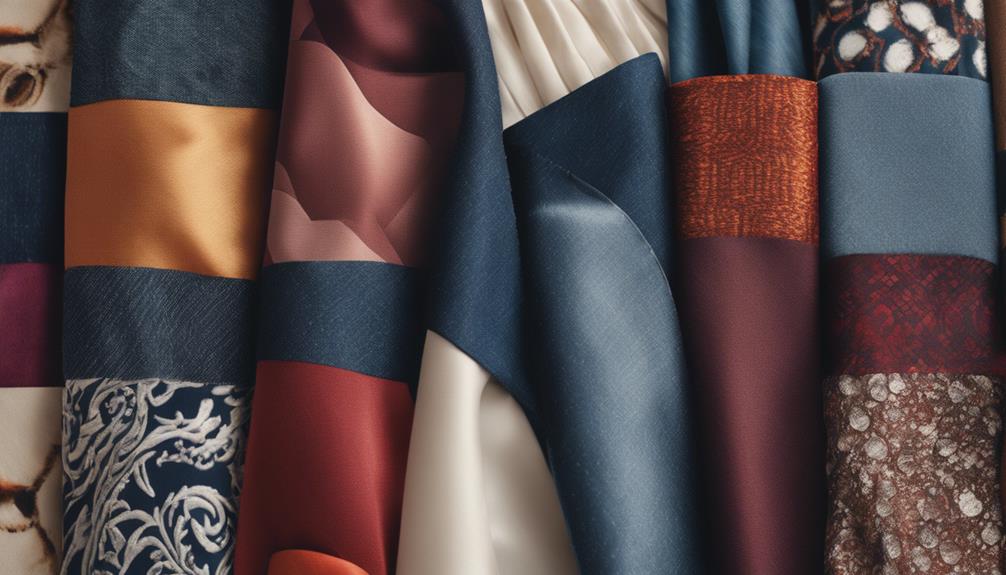
When you think about modern fashion, sustainable fabric choices play an essential role in shaping trends.
With more fashion labels prioritizing eco-friendly materials, you can create stylish pieces that resonate with today's conscious consumers.
Plus, A-list fashion influencers are leading the charge, showcasing how sustainable fashion can be both chic and impactful.
Sustainable Fabric Choices
Sustainable fabric choices are revolutionizing the fashion industry by prioritizing eco-friendly materials that reduce environmental impact. You might want to explore natural fibers like organic cotton, Tencel, and hemp, which aren't only biodegradable but also require fewer resources to produce compared to conventional fabrics. By opting for these materials, you're actively supporting a healthier planet.
Recycled polyester is another fantastic option, as it utilizes post-consumer waste, thereby minimizing landfill contributions and conserving energy during production. This choice reflects a growing trend toward sustainability in fashion, allowing you to create stylish designs that are also conscientious.
When selecting your fabrics, keep in mind the importance of eco-friendly dyes and finishes. These processes considerably lower water pollution and promote healthier manufacturing practices, aligning with your commitment to sustainability.
Look for certification labels like Global Organic Textile Standard (GOTS) and OEKO-TEX, which guarantee that the fabrics you choose meet strict environmental and social criteria.
Sustainable Fashion Labels
Many fashion labels today are embracing sustainability by integrating eco-friendly materials and transparent practices into their collections, reflecting a modern interpretation of responsible design.
Sustainable fashion labels are at the forefront, utilizing eco-friendly fabrics like organic cotton, Tencel, and recycled polyester. By doing this, they promote environmental responsibility and challenge conventional fashion norms.
These brands often prioritize transparent supply chains, ensuring fair labor practices and ethical sourcing of materials. This commitment extends to their production processes, where they increasingly adopt natural dyes and low-impact finishing techniques. These innovations help minimize water pollution and reduce chemical usage, making a significant positive impact on the environment.
You'll also notice that many sustainable fashion labels display certifications like GOTS (Global Organic Textile Standard) and OEKO-TEX® Standard 100. These certifications assure you of the fabric's quality and its environmental impact, giving you peace of mind with your purchases.
Furthermore, sustainable labels often explore innovative materials, such as pineapple leather (Piñatex) and mushroom-based textiles, showcasing a dedication to reducing waste and utilizing alternative resources. Embracing these sustainable choices not only enhances your designs but also contributes to a more responsible fashion industry.
A-list Fashion Influencers
A-list fashion influencers constantly elevate their style by choosing high-quality materials that transform their designs into high-fashion statements. You'll often find them opting for fabrics like Print Stretch Silk Jersey, which offers both comfort and elegance, making it perfect for chic, form-fitting designs.
Floral Print Quilting Cotton is another favorite; its vibrant patterns allow influencers to create standout pieces that reflect their unique styles while staying ahead of trends. Additionally, Baroque Printed Stretch Silk adds a touch of opulence to their collections, attracting attention with its intricate designs.
These influencers also incorporate Abstract Scallop Printed Stretch to introduce playful yet sophisticated elements into their outfits. By using these specialty fabrics, they create visually engaging ensembles that resonate with their followers.
Collaborations with fabric vendors give influencers the opportunity to curate exclusive collections, promoting quality materials that align with their vision. They understand the importance of versatile fabrics that can be mixed and matched, allowing their audience to effortlessly integrate high-fashion designs into their everyday wardrobes.
In this way, A-list influencers not only set trends but also make high-quality materials accessible to fashion enthusiasts everywhere.
Styling Tips
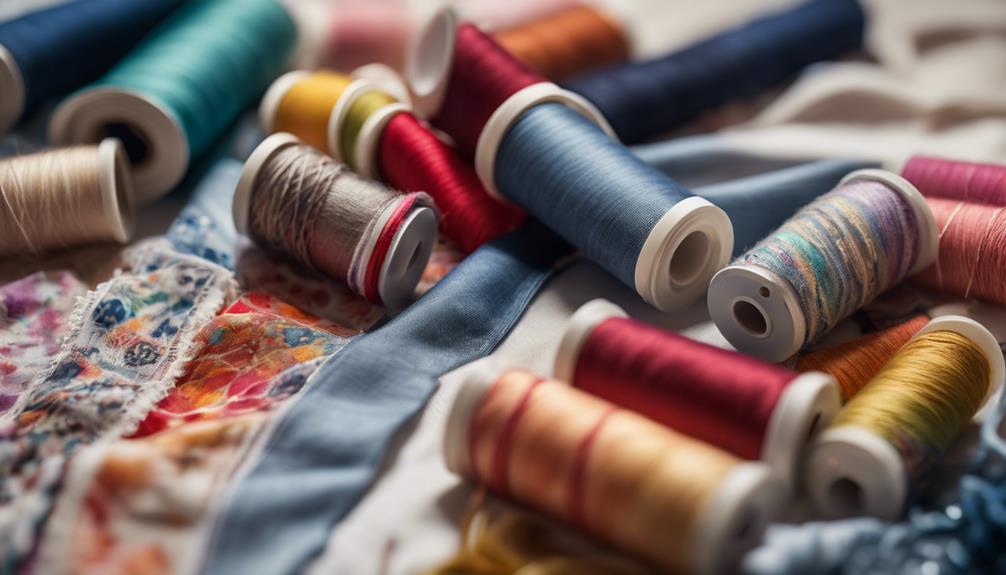
When it comes to styling your outfits, classic tailored blazers can elevate any look with sophistication.
Layering different textures for fall not only adds depth but also keeps your style fresh and interesting.
Plus, coordinating your color palette guarantees a cohesive and polished appearance that stands out.
Classic Tailored Blazers
To create a polished look with your classic tailored blazer, focus on high-quality fabrics that not only provide structure but also enhance comfort and style.
Opt for wool or a wool blend, as these materials guarantee durability while maintaining an elegant appearance. For added luxury, consider lining your blazer with silk or rayon. You'll appreciate the smooth feel against your skin.
If you're looking for versatility, timeless colors like navy, black, or charcoal gray should be your go-to choices. These shades pair effortlessly with various outfits and never go out of style. You can also experiment with specialty fabrics like Print Silk Jersey Knit or Stretch Silk to introduce a unique texture to your blazer.
Additionally, pay attention to details like lapel shape and button type. High-quality buttons and well-structured lapels can greatly elevate your blazer's aesthetic.
If you want to add a touch of flair, consider a Floral Crest Border Print for a subtle yet eye-catching detail. By incorporating these elements from the Fashion Fabrics Club, you'll create a tailored blazer that's both stylish and timeless.
Layered Textures for Fall
Building on the polished look of a tailored blazer, layering textures for fall allows you to create outfits that are both warm and stylish.
Start with a foundation of knit fabrics; double brushed knits provide comfort while keeping you cozy. For breathable layers, mix rayon and cotton-modal, shifting effortlessly from warm afternoons to cooler evenings.
Incorporating specialty fabrics like faux fur and pebble crepe adds visual interest and depth to your ensemble. Don't shy away from printed stretch silk, either—eye-catching paisley or animal prints can elevate your look. Pair these vibrant prints with solid colors to strike a perfect balance in your outfit.
Experimentation is key; try layering lightweight chiffon under heavier twill knits for a dynamic appearance that's functional for fall. Varying fabric weights not only enhances your look but also helps regulate temperature.
Color Palette Coordination
Coordinating color palettes effectively can transform your fashion designs, making them visually striking and cohesive. Start by integrating vibrant prints like Multi Rainbow Quilting Print or Printed Stretch Silk to add an eye-catching element to your work. These bold patterns can set the tone for your entire collection, so don't hesitate to let them shine.
Next, balance these vivid prints with neutral base fabrics, such as Off-White Cotton-Modal Stretch Jersey Knit. This approach creates a harmonious look that helps your designs breathe while still making a statement. Experiment with layering textures, combining lightweight fabrics like China White Clip Dot with heavier materials, such as Black Nylon Spandex Stretch Scuba Knit, to add depth.
Don't forget the power of color theory in your Color Palette Coordination. Mixing complementary colors can enhance the overall aesthetic; for instance, pairing Navy-Black-Beige Chiffon Fabric with a contrasting Red-Black Floral Printed Crepe can create striking visual interest.
Shopping Guide

When you shop at Fashion Fabrics Club, you'll find a diverse array of fabric types that cater to all your fashion design needs. From luxurious Printed Stretch Silk to practical Quilting Cotton, there's something for every project. Check out the new arrivals marked as 'NEW' for the latest patterns and designs.
To make your shopping experience easier, use the quick buy option. Just keep an eye on stock status, as some items might be 'Sold Out.' For the best deal, compare prices between the website and other retailers like Amazon. You might discover better deals or free shipping options elsewhere.
Before making a final decision, consider reviewing fabric quality by swatching. This selection ranges from excellent to subpar, and it's essential to guarantee you're getting the quality you need for your designs.
With these tips, you can navigate your online fabric shopping more effectively, assuring you get the best materials for your creations.
Happy shopping, and may you find the perfect fabrics to bring your designs to life!
Sewing Techniques for Beginners
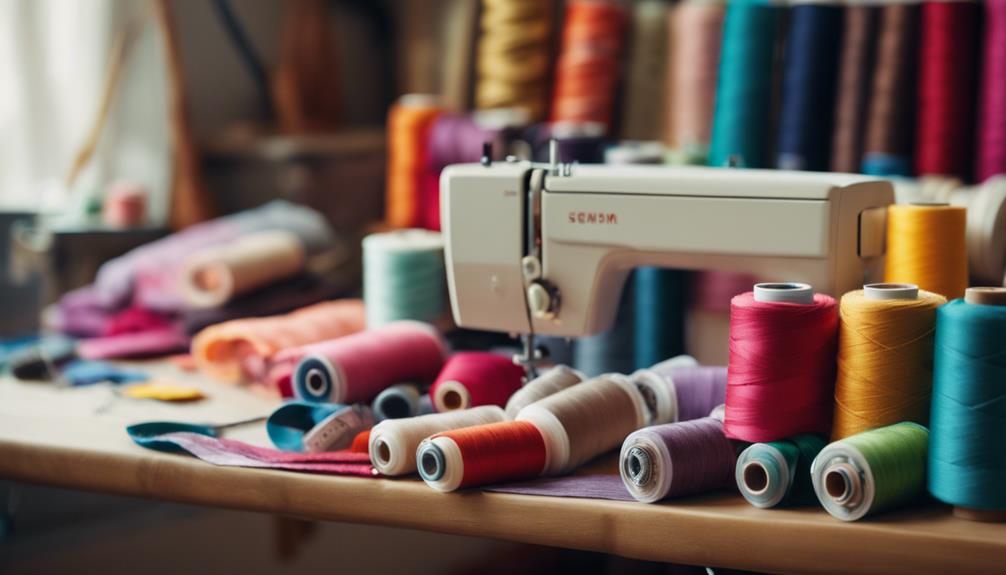
When you're starting out in sewing, upcycling old garments can be a fun way to practice your skills while giving new life to clothes you no longer wear.
Adding personalized embellishments and patches lets you express your creativity and make each piece unique.
These techniques not only enhance your sewing abilities but also help you develop a stylish, one-of-a-kind wardrobe.
Upcycling Old Garments
Upcycling old garments offers a creative and eco-friendly way to refresh your wardrobe while honing your sewing skills. Start by selecting items made from durable fabrics like cotton or denim; these materials are perfect for transformation through various upcycling techniques. You can breathe new life into your clothing by using simple sewing methods like patching, reshaping, or even combining pieces to create a patchwork effect. This not only makes your designs unique but also reduces waste.
For beginners, consider easy projects like converting an oversized shirt into a fitted crop top or turning a long skirt into a stylish tote bag. These transformations aren't only fun but also help you develop your sewing skills.
Don't hesitate to explore online tutorials and resources, as they can provide inspiration and guidance on new upcycling techniques. Engaging with sewing communities can also spark creativity and help you discover other creators' projects.
With a little imagination and some old garments, you can make trendy pieces that reflect your personal style while contributing to a sustainable fashion approach. So grab those old clothes and start upcycling!
Personalized Embellishments and Patches
Personalized embellishments like patches and appliqués can transform your garments into unique expressions of style. As a beginner, you can start by using quilting cotton for a sturdy base. This fabric provides durability and structure, making it perfect for your projects. You might also consider experimenting with Printed Stretch Silk for a more luxurious feel, adding a bit of flair to your designs.
To attach your patches, begin with simple sewing techniques like straight stitching. This guarantees your embellishments are secure while preventing fraying. For a temporary hold, fabric glue or fusible web works wonders, allowing you to adjust the placement before committing to sewing.
Don't be afraid to experiment! Using decorative stitches or contrasting thread colors can elevate your overall pattern and design. Incorporating these embellishments not only personalizes your clothing but also gives you a chance to practice your sewing skills.
As you create one-of-a-kind pieces, you'll find that the process is both rewarding and enjoyable. So gather your materials, release your creativity, and let your garments reflect your unique style!
Cultural Impact

Fashion plays an essential role in music videos, often reflecting cultural trends and influences in bold ways.
You can't ignore how clothing choices in these visuals can spark conversations about political activism and social movements.
As you explore materials for your designs, consider how they can express these powerful cultural narratives.
Fashion in Music Videos
Music videos have transformed into influential platforms that not only showcase artistic expression but also shape fashion trends, urging viewers to adopt new styles. You'll notice how artists like Beyoncé and Lady Gaga use striking materials like Printed Stretch Silk and bold patterns to make powerful statements. Iconic visuals, such as Madonna's Baroque-inspired outfits or Britney Spears' playful use of One Mans Trash Print, resonate long after the videos air.
Collaborations between fashion designers and musicians have become commonplace, leading to exclusive lines that reflect the aesthetics of music videos. Take Rihanna's Fenty line, which draws inspiration from her music videos, blending luxury with street style. These partnerships highlight how fashion in music videos often mirrors broader cultural movements, as seen in Lizzo's empowering use of Floral Petal Printed Stretch fabrics that challenge body norms.
Studies show that viewers are more likely to remember and emulate styles from music videos than from traditional fashion ads. This phenomenon emphasizes the significant role music videos play in shaping contemporary fashion trends, making them essential to both artists and designers alike.
Fashion and Political Activism
As trends evolve from the vibrant visuals of music videos, the fashion industry increasingly embraces political activism, using style as a vehicle for social change. You might notice how designers now feature organic cotton and other sustainable materials, making a statement about environmental issues and labor rights. By choosing fabrics like Printed Stretch Silk or recycled textiles, they align their creations with movements advocating for sustainable fashion and climate action.
Fashion weeks and runway shows have transformed into platforms for activism. Models and designers showcase collections that not only highlight aesthetic appeal but also address pressing social issues, such as racial inequality, LGBTQ+ rights, and women's empowerment. This visibility encourages consumers to support brands that promote inclusivity and diversity, ultimately influencing industry standards.
Your choices as a consumer can amplify this impact. When you opt for sustainable fashion, you support brands that prioritize ethical practices and transparency. This collective push for change shapes the future of fashion, demonstrating that style can indeed drive political activism.
Frequently Asked Questions
Who Owns Fashion Fabrics Club?
You'll find that Fashion Fabrics Club is owned by a dedicated family-run business. They've been committed to providing high-quality fabrics and ensuring customer satisfaction since their establishment, focusing on diverse textiles and competitive pricing.
Where Do High End Designers Get Their Fabric?
High-end designers get their fabric from luxury suppliers, attending trade shows like Premiére Vision for trends. They seek exclusive collections from renowned manufacturers and collaborate with artisanal mills in Italy and France for custom fabrics.
What Fabric Do Fashion Designers Use?
Fashion designers use a mix of fabrics like luxurious silks, versatile cottons, and specialty blends. You'll find chiffon, satin, and stretch knits, each chosen for their unique qualities that enhance your designs and appeal.
What Is the Most Commonly Used Fabric in Fashion Design?
The most commonly used fabric in fashion design is cotton. It's versatile, breathable, and easy to care for, making it perfect for various garments. You'll find it in everything from casual wear to formal attire.
What Fabrics Are Best for Making Stylish Outfits for Kids?
When it comes to creating stylish outfits for kids, choosing the right fabrics is essential. Soft and breathable materials like cotton and linen are perfect for keeping children comfortable and fashionable. Additionally, stretchy fabrics like spandex can provide flexibility for active kids. Overall, selecting high-quality fabrics is crucial for designing stylish outfits for kids.
Conclusion
In summary, exploring the world of fashion fabrics opens up endless possibilities for your designs.
With a rich history, unique characteristics, and modern interpretations, you can truly express your creativity.
Remember to reflect on styling tips and shopping guides to find the perfect materials, and don't shy away from trying out new sewing techniques.
Embracing the cultural impact of these fabrics can also inspire your work.
So go ahead, immerse yourself, and let your imagination run wild!
